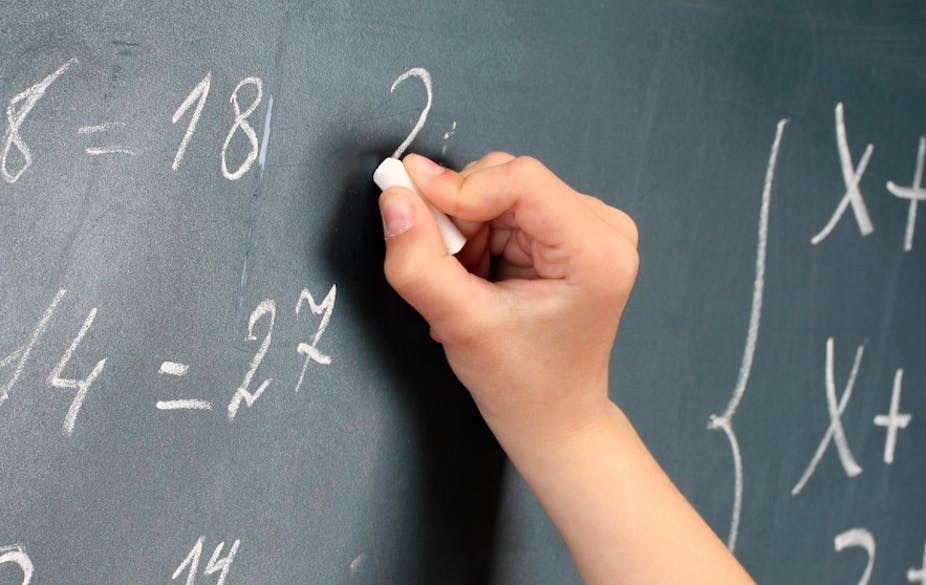The results of international literacy, numeracy and science tests released this week should be cause for alarm.
In what the minister for education Peter Garrett called “disappointing” results, the Progress in International Reading Literacy Study (PIRLS) test showed Australia now ranks 27th out of 48 countries in reading, and the Trends in International Mathematics and Science Study (TIMSS) showed Australian children’s performance in maths has largely stagnated since 1995.
But who is to be blame? And how can we improve our children’s achievements?
The Victorian minister for education Martin Dixon has claimed that Victorian education outcomes have failed to improve despite real expenditure on schooling increasing by 44%. He discounts funding as an issue in the school improvement equation because the investment in education has “matched OECD averages and even exceeded the spending of some top tier systems including Finland and Korea”.
But these statements are not borne out by the facts – there has been no 44% increase and the money that goes to schools is clearly not going where it’s needed. It also highlights just how vital the Gonski funding review’s plan to inject money into the school system really is – and that it can’t come soon enough.
What are the facts?
The fundamental pattern of ongoing Australian government funding for schools is that most is provided to non‐government schools (and state and territory governments provide the majority of their funding to government schools). Additional funding from state governments also goes to support private education.
This money comes from all taxpayers, including of course the 1.4 million workers on a minimum wage of $15 an hour who are supporting the likes of Geelong Grammar ($5.2 million in Federal Government funding in 2012 plus about $1 million from the Victorian Government. Together with fees and other private contributions, this will provide resourcing of over $35,000 a year for senior students). In 2010, it recorded a profit of $10.7 million, the biggest of any private school in Australia. Melbourne Grammar made $8.2 million profit after receiving $4.5 million government funding in 2011. Haileybury College received a massive $13.4 million and Wesley College $8.1 million.
Significantly Commonwealth funding for non-government schools rose from around $3.50 for each dollar spent on public schools, to around $5 dollars between 1997 and 2007. In the past decade government funding has increased by 112 per cent to independent schools,
In fact, Canberra now gives more money to private schools than it does to universities – more than $36 billion in federal funds will flow to non-government schools in the period 2009-2013. Federal Government funding for high fee private schools is 6 to 10 times greater than the additional funding provided to disadvantaged schools. It is a national disgrace.
The National Reports on Schooling in Australia show that government spending per student in Australia was $8,115 in 1999-2000 ($11,731 in 2012 dollars) and $13,544 in 2008-09 ($14,637 in 2012 dollars). That is a real increase of only 24.7%.
The ABS reports a real increase in education spendingper capita of GDP over the ten years from 1998-99 to 2008-09 of 24.4%. Neither of these figures are even close to the minister’s 44% figure.
And as for Dixon’s statement about comparative rates of funding in the OECD, Australian government and private expenditure on schools as a proportion of Gross Domestic Product amounted to 3.1% of GDP. Of the 29 OECD countries for which data was available, only seven countries ranked lower than Australia on this measure.
For Finland, government expenditure on schools amounted to 3.6% of GDP, and private expenditure was negligible or non‐existent as there are no private schools in Finland that receive any government support whatsoever.
Government sources were responsible for 81% of total expenditure on Australian schools, compared to the OECD average of 90.3%. For Finland on the other hand, 99% of total expenditure on schools was from government sources and 1.0% from private sources. Annual government expenditure on Australian government schools was $US 6980 per student, compared to the OECD average of $US 7262.
According to OECD data government expenditure on education as a per cent of GDP in Australia was 4.9% in 2001 and fell to 4.4% in 2008 and rose to 5.1% in 2009 as a result of the Building the Education Revolution capital investment in all schools. More telling is that over the same period government expenditure on education as a percentage of total government expenditure in Australia fell from 14.2% to 12.9%.
Where’s the funding?
For the past 20 years Australia has seen a decline in funding of public education that has led to a drift and now tidal flood of middle class families from our public schools.
Across the conservative states we have seen more than one billion dollars ripped out of public education in the last two years alone while spending on private education has remained constant or even increased.
If politicians and other educational commentators want to claim that funding for education has increased so much in the last 10 years for so little gain in educational outcomes then it is imperative that they actually base their claims on evidence.
What the facts indicate is that Australia’s education funding has not kept pace with the rest of the OECD education leaders disadvantaging our public schools and the children that they teach as a result.
Instead of the money going to where it’s needed, successive governments have shifted public funds to often already well-resourced private schools at the expense of our public education system.
Only the full implementation of the Gonski Review recommendations can turn this situation around and start to channel the much needed resources to those schools and children that need them most.

